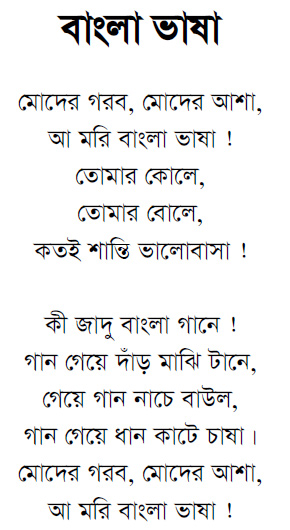
Ekushey February II: Young men and child killed, becoming first shaheed of Bangladesh
Last updated: 5 October 2017 From the section 1952 Bhasha Andolon
From 3 pm onwards that the Police found the situation was slipping beyond their control. A second and last determined lathi charge was made by the Police at 3 pm "on the mob on the road". Apparently, one of these lathi charge was to 'save' Deputy Superintendent of Police Md. Siddique Dewan who was being "manhandled" by the crowd.
This time, however, the lathi charge did not have the desired effect and the police themselves were forced to retreat rather than the crowd. They were in danger of being "encircled and overpowered" by brick-throwing students who were closing in on the police force from two sides - from the University playground corner and from the Medical College Hostel.
I cannot part with this enquiry without recording the astonishment with which I learned that the East Bengal Police Force is not equipped with steel helmets and has only a few ancient A.R.P. helmets to draw on. It seems incredible that a force required to maintain law and order should have to take up "action stations" wearing cloth caps and stand its ground under showers of brickbats, stones and similar weapons, and Dacca, in its present state of constructional activity, presents potential law-breakers with a veritable arsenal of ammunition. Had the Police force under Mr.Idris been properly equipped, it is more than probable there would never have been any occasion for this enquiry.
Justice T. H. Ellis on the state of East Pakistan's police force
District Magistrate Qureshi, Deputy Inspector-General A.Z. Obaidullah and Superintendent of Police Muhammad Idris agreed that the situation was so desperate that it was necessary to open fire. As a last resort, a final warning was given but as this had no effect, under the direction of the District Magistrate and under the direct orders of the Superintendent of Police, the Police party fired on the rioters.
The situation was grave and the agitators came from all directions and brickbats come like showers and we had no place to take shelter and many police officers including constables were Injured. The situation was so grave that the D.M. [District Magistrate of Dhaka, S. H. Qureshi] passed to open fire.
The firing party consisted of 3 head constables and 30 constables who formed a square on the road between the Medical College gate and the Medical College Hostel gate. Five men on each flank faced the University ground and the Medical College Hostel in a kneeling position. The rest remained facing the north-west. Other members of the police party and the Superintendent of Police himself took up their position inside the square.
Firing was done under my command. I put my men in position and formed them in flanks of 5 men each facing the university ground corner and Medical College Hostel side. I ordered my men on both flanks to fire one round each. They did so. The crowd near the University playground, at the corner of the University playground—was held back and I found one man dropping down there, but the crowd from the Medical College Hostel side fell back momentarily and again advanced towards us with heavy showers of brickbats.
I ordered the 5 men in the flank to fire a volley of rounds. Then I ordered them to stop as soon as I saw this mob falling back. I ordered cease fire and then checked up ammunitions and found that in all 27 rounds were fired.
Muhammad Idris, Superintendent of Police (Dhaka)
In a 30-minutes blitz, which started at 3.20 pm and ended at 3.50 pm, one language demonstrator after another started falling on the ground in front of the Dhaka Medical College Hostel, with blood spilling from their bodies.
The police and para-military forces resorted to wide-spread tear gas shelling, clubbing, and finally shooting. As a result, several students were killed, hundreds were injured, and thousands were arrested. A reign of terror was let loose by the government but the language movement did not stop. The students killed were declared martyrs (shohid) as they had laid down their lives for their beloved mother tongue.
In the police encounter, the bloodstained body of Abul Barkat, a student of MA class at Dhaka University, collapsed on the ground. He was followed by Muhammad Salahuddin, a fellow student, who lost the skull of his head. Other known shaheeds (martyrs) are Abdul Jabbar, a tailor who had come from Gaffargaon, Mymensingh, to tend to a relative in hospital, Rafiquddin Ahmed, then a student of Debendra College in Manikganj, and Abdus Salam, a peon in an office. Salam would die from his injuries a few days after Ekushey February.
A nine-year-old boy named Ohiullah was also killed.
The exact number of deaths are not known. Many other known and unknown youths either lost their lives or were admitted in the hospital in a critical state. Hundreds were injured and thousands were arrested though the government alleged only 4 had suffered casualties. Others say 12 had died, including an unidentified rickshaw puller. Tajuddin Ahmad, who became the first Prime Minister of Bangladesh, wrote in his diary that there had been '4 spot deaths of bullets, 30 injured, 62 in jails', though he had not actually witnessed the deaths. Either way, Dhaka city's earth was made crimson by the blood of these innocents people. East Bengal would never be the same again.
The official version, given in a government circular and in the statement of the Chief Minister Nurul Amin on the floor of the provincial legislature was that the students used 'filthy language' to policemen, attacked vehicles, and forced shopkeepers to close their shops. It also stated that they threw brickbats at the police, injuring some policemen. The District Magistrate finally ordered the police to open fire. Even then, the crowd did not disperse but attacked the police. Thereupon, 'some more rounds were fired', killing one and injuring nine people. Three of the injured died later.
Those killed are considered the first shaheed (martyrs, pronounced 'shohid') of Bangladesh. It was the first time in history that a nation had to shed blood for the right to speak their native language.
The state made swift work of concealing their bodies. The bodies of those killed were not given to their families. The security forces had them buried in the eerie silence of night descending on the province after a day of tragedy.
Syed Badrul Ahsan, Journalist
A reign of terror was let loose by the government but the language movement did not stop. By noon, Dhaka Central Jail was full to capacity with arrested students and the remaining prisoners were taken by bus to a Jungle (Bhawal Jungle) and left there.
Amor Ekushe website
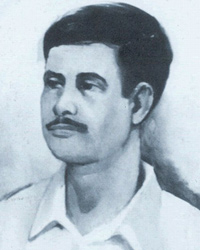 Abdus Salam () Staff member of the industrial directorate who died on 7 April 1952 after sustaining fatal injuries during Ekushey February. Father, Fajil Mia, and mother, Dauluter Nessa, passed away before witnessing their son’s national honour in independent Bangladesh
Abdus Salam () Staff member of the industrial directorate who died on 7 April 1952 after sustaining fatal injuries during Ekushey February. Father, Fajil Mia, and mother, Dauluter Nessa, passed away before witnessing their son’s national honour in independent Bangladesh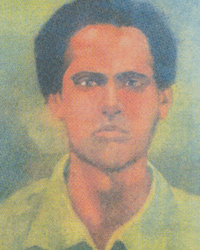 Rafiq Uddin Ahmed () A student of Debendra College, Manikganj, shot dead by Pakistani police during Ekushey February. Eldest son of Abdul Latif Miyan and Rafiza Khatun. Well-known in Manikganj, since his childhood, as a social worker with passion for music and theatre. Rafique’s dead body, later snatched by the Pakistani commandos, was buried at the Azimpur Graveyard. However, grave was lost and could not be identified later. Thus every year, thousands of his fellow countrymen pay their respect to him at the Azimpur grave yard. Born in village of Paril, Manikganj district.
Rafiq Uddin Ahmed () A student of Debendra College, Manikganj, shot dead by Pakistani police during Ekushey February. Eldest son of Abdul Latif Miyan and Rafiza Khatun. Well-known in Manikganj, since his childhood, as a social worker with passion for music and theatre. Rafique’s dead body, later snatched by the Pakistani commandos, was buried at the Azimpur Graveyard. However, grave was lost and could not be identified later. Thus every year, thousands of his fellow countrymen pay their respect to him at the Azimpur grave yard. Born in village of Paril, Manikganj district.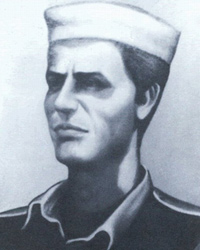 Abdul Jabbar () a young farmer from gaffargaon, killed during Ekushey February. In February 1952, Jabbar’s mother-in-law fell ill so for better treatment Jabbar took her to Dhaka Medical College Hospital.Carried the banner during Ekushey February and when the police opened fire, he was one of the first to fall. Left behind a son, who was just 15-months-old at the time, his wife Amina Khatun, aging father and mother. Born in village of Pachua, Mymensingh.
Abdul Jabbar () a young farmer from gaffargaon, killed during Ekushey February. In February 1952, Jabbar’s mother-in-law fell ill so for better treatment Jabbar took her to Dhaka Medical College Hospital.Carried the banner during Ekushey February and when the police opened fire, he was one of the first to fall. Left behind a son, who was just 15-months-old at the time, his wife Amina Khatun, aging father and mother. Born in village of Pachua, Mymensingh. Mohammad Salauddin () a bank employee, was injured in the firing and died in hospital later
Mohammad Salauddin () a bank employee, was injured in the firing and died in hospital later Abdul Awal () Rickshaw driver who died under a police truck, used to dissolve the funeral procession of the martyrs of the language movement on the night of Ekushey February.
Abdul Awal () Rickshaw driver who died under a police truck, used to dissolve the funeral procession of the martyrs of the language movement on the night of Ekushey February.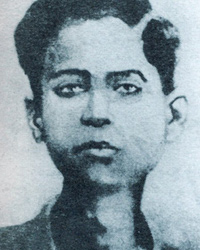 Abul Barkat (1927 - 1952) MA final year student of the department of political science of Dhaka University, shot dead during Ekushey February. Achieved 4th position at the Honours final examinations from the same department. Eldest son of Shamsuzzhoha. Killed at age of 26. Born in village of Babla, Murshidabad district in India.
Abul Barkat (1927 - 1952) MA final year student of the department of political science of Dhaka University, shot dead during Ekushey February. Achieved 4th position at the Honours final examinations from the same department. Eldest son of Shamsuzzhoha. Killed at age of 26. Born in village of Babla, Murshidabad district in India.
From this moment onward, Ekushey February would be known as 'Shaheed Dibosh' (Day of Martyrs) and become the symbol of Bengali nationalism and then secession.
The students lost lives for the future generation to sing with delight:
Moder gorob, moder aasha
A'mori Bangla basha.Zeenat Khan, Writer
"Bangla Basha" by Otulproshad Sen
Battle continues
The firing did not dampen the spirit of the protestors. In fact, the reaction to the police killings was immediate and the opposite. The protest grew stronger and more intense. The rain of brickbats continued and a loudspeaker was utilised in the Medical College compound to stir up the crowd. The blood-stained clothing of the dead and wounded were held aloft and cries of revenge rocked the neighbourhood. As the news of the killings spread, disorder erupted across the city. People began to gather on the premises of Dhaka Medical College Hospital. In early evening the police made another lathi charge and the throng, exhausted by the day's hostilities and seeing the shadows of night falling, agreed to leave the area. But the demonstration was not over.
The news of the killing spread like wildfire throughout the city and people rushed in thousands towards the Medical College premises.
Talukder Maniruzzaman , author of "The Bangladesh Revolution and its Aftermath" (1980)
Chief Minister Nurul Amin ignores the wounded
The same (Ekushey) evening, the Legislative Assembly held one of the stormiest sessions of its life. Nurul Amin defended the government, while Dhirendranath Datta, Maulana Abdur Rashid Tarkabagish, Khairat Hossain and Shamsuddin Ahmed opposed it vociferously. Six opposition members including Manoranjan Dhar, Boshontokumar Das, Shamsuddin Ahmed and Dhirendranath Datta requested that chief minister Nurul Amin visit wounded students in hospital and that the assembly be adjourned as a sign of mourning. This motion was supported by some of the treasury bench members including Maulana Abdur Rashid Tarkabagish, Shorfuddin Ahmed, Shamsuddin Ahmed Khondokar and Mosihuddin Ahmed. However, Nurul Amin refused the requests and urged the House to proceed with the planned agenda for the day. At this, all the opposition members of the Assembly simply walked out in protest.
For its part, the government, through press statements, stayed busy trying to demonise the students.
As a press note reported: "On the Nawabpur Road another unruly crowd overpowered the police officers in charge of the forces … Since it would not disperse, firing was resorted to in order to disperse it. A lathi charge was also made in the university area".
The authorities went to every extent possible to paint the students in dark colours. It even reported that Hasan Ali, the minister for communications, had been injured as a result of student violence.
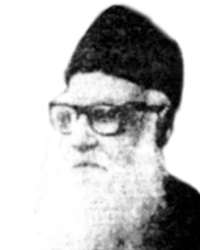 Maulana Abdur Rashid Tarkabagish () Pioneer of the historic Salanga movement against British colonial role in the subcontinent and he played an outstanding role in abolishing zamindari system, formulation of loan arbitration board and sharecropping system. First to deliver speech in Bangla language at Gono Parishad at Karachi in Pakistan in 1955. In 2007 Dhaka City Corporation (DCC) renamed Dhanmondi Road No. 5 after Abdur Rashid Tarkabagish and Dhanmondi Road No. 6 after Abul Kalam Shamsuddin in recognition of their outstanding contribution to the Language Movement.
Maulana Abdur Rashid Tarkabagish () Pioneer of the historic Salanga movement against British colonial role in the subcontinent and he played an outstanding role in abolishing zamindari system, formulation of loan arbitration board and sharecropping system. First to deliver speech in Bangla language at Gono Parishad at Karachi in Pakistan in 1955. In 2007 Dhaka City Corporation (DCC) renamed Dhanmondi Road No. 5 after Abdur Rashid Tarkabagish and Dhanmondi Road No. 6 after Abul Kalam Shamsuddin in recognition of their outstanding contribution to the Language Movement.  Shamsuddin Ahmed ()
Shamsuddin Ahmed ()  Manoranjan Dhar ()
Manoranjan Dhar ()  Boshontokumar Das ()
Boshontokumar Das ()  Shorfuddin Ahmed ()
Shorfuddin Ahmed ()  Shamsuddin Ahmed Khondokar ()
Shamsuddin Ahmed Khondokar ()  Mosihuddin Ahmed ()
Mosihuddin Ahmed ()
More uproar and construction of first Shaheed Minar follows
The students held a condolence meeting at which Abul Kalam Shamsuddin, a member of the East Bengal Legislative Assembly and editor of the Daily Azad newspaper, delivered a speech, and a monument (Shaheed Minar) was hurriedly erected in honour of the martyred victims. The students again clashed with the police who demolished their minar.
To bring the situation under control, the government announced curfew in the evening and deployed the army in Dhaka. In response, with a view to providing the Language Movement with more efficient leadership, the "All Party State Language Action Committee" was reformed and a whole day strike, Gayebana Zanaza (Prayer for the deportees) and procession was announced for February 22nd. For subsequent 3 to 4 days Dhaka turned into a city of demonstrations and processions by thousands and lakhs of people chanting angry slogans against police atrocities, although curfew was still in force. Shops stayed closed and no vehicles were seen on the streets of Dhaka. Railway workers stayed away from work, which meant that trains did not leave Dhaka or enter it. Clashes between citizens and the police were reported from various parts of the city. Despite a heavy presence of police and soldiers on the streets, thousands of Bangalis poured out to condemn the government over the killings of February 21. Women students of Dhaka University, besides their male fellow students, came together to condemn what they called the barbaric act of the government. On the whole, the students demanded the resignation of the chief minister Nurul Amin.

